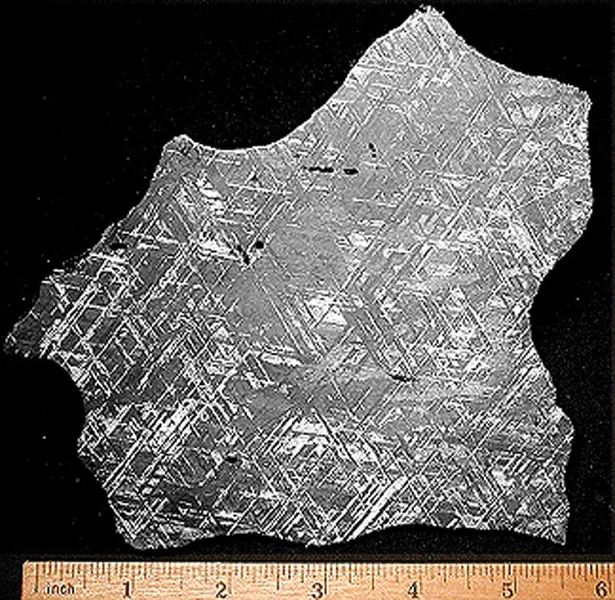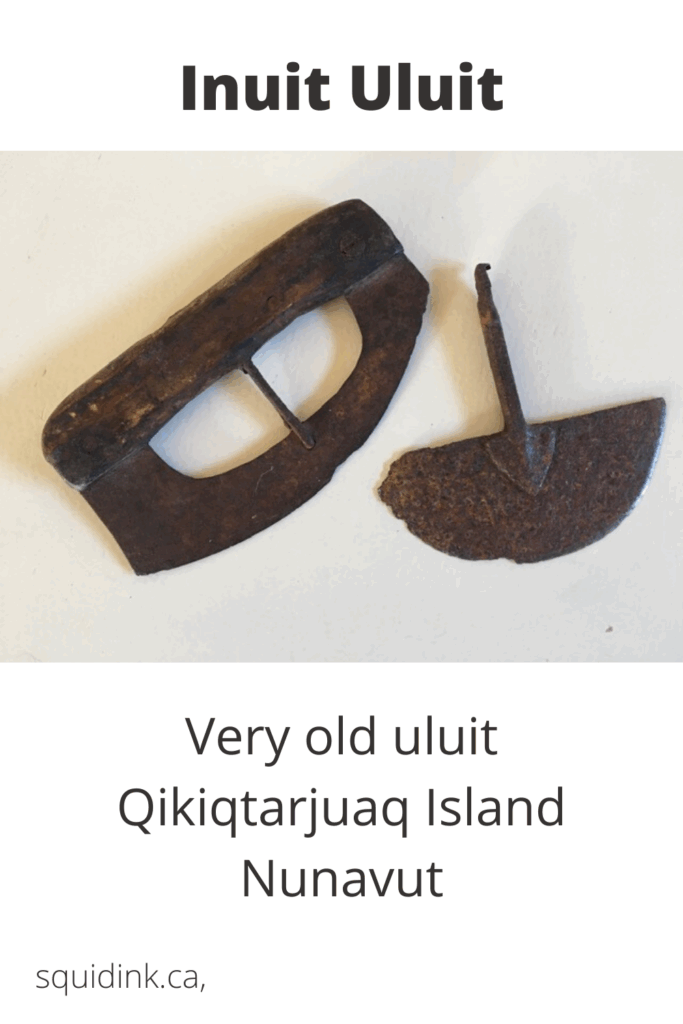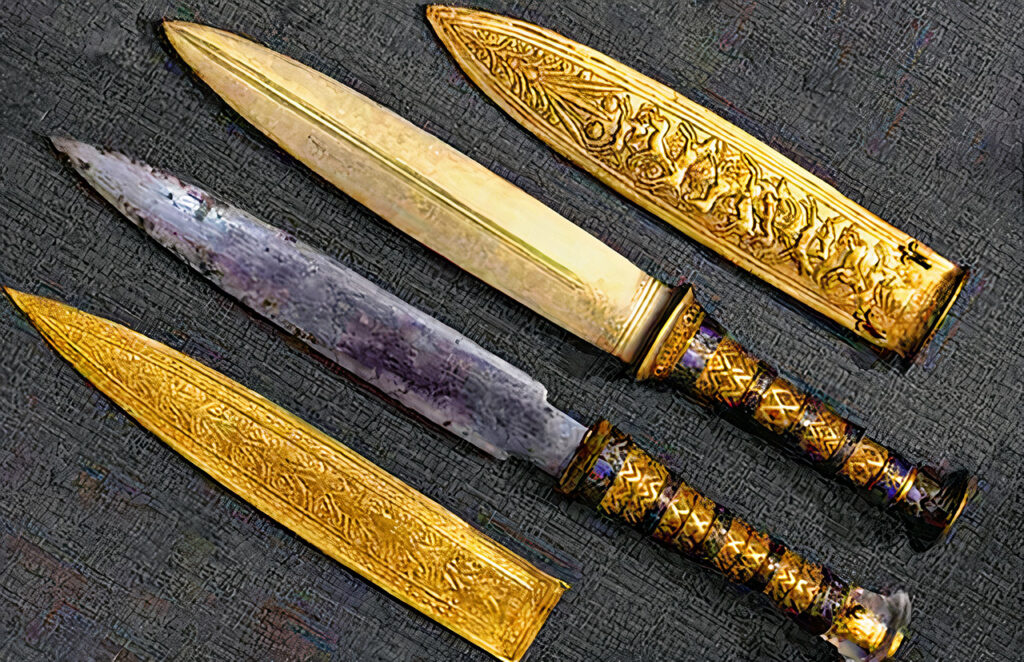This Ancient Weapon Is Unlike Anything Ever Found: Forged from a Falling Star—this phrase might sound poetic, but it’s rooted in hard science, ancient history, and cultural legend. Long before humans understood the composition of space rocks, ancient blacksmiths recognized something special in chunks of iron that literally fell from the sky. They melted and shaped that rare material into some of the oldest and most mysterious weapons known to mankind.
These weren’t just ordinary tools of war. Weapons forged from meteorites were revered, symbolic, and incredibly rare. They were often owned by kings, emperors, and tribal elites. In a time when iron itself was still rare and valuable, the idea of using metal from outer space was nothing short of magical. This guide will break down everything you need to know about these ancient cosmic weapons—from their formation in the stars to their cultural significance and how they were made.
This Ancient Weapon Is Unlike Anything Ever Found
The idea of a weapon forged from a falling star blends science, history, art, and spiritual meaning. These blades are proof that our ancestors were not only skilled craftsmen but also dreamers—capable of turning cosmic remnants into practical and symbolic tools. Whether you’re a blacksmith, museum buff, or a science nerd, these ancient star-forged blades remind us that even before we had telescopes or satellites, humans found ways to reach for the stars—one swing of the hammer at a time.

| Feature | Details & Stats | Reference |
|---|---|---|
| Material Composition | 5–20% nickel, iron-nickel alloys (kamacite, taenite), Widmanstätten patterns | NASA – Meteorite Science |
| Historic Blades Identified | King Tut’s dagger (1323 BC), Anatolian dagger (2500 BC), Inuit ulus | Smithsonian, Met Museum |
| Edge Hardness | Rockwell B hardness ~80 vs. average wrought iron ~60 | Materials Science Reports |
| Cultural Significance | Used by royalty, revered as divine gifts, featured in spiritual traditions | Met Museum, Egyptian Museum |
| Modern Replication Techniques | Smelting at ~1,200 °C, acid etching, pattern welding | ASM International |
| Career Fields | Archaeometallurgy, bladesmithing, curation, academic research | American Society for Metals |
| Link to Official Resource | NASA Science Portal | NASA |
What Is a Meteorite Weapon?
A meteorite weapon is any tool—typically a dagger, knife, axe, or sword—made from iron extracted from a fallen meteorite. Meteorites, particularly iron-rich ones, often contain unique blends of nickel and iron. These metals cooled over millions of years in space, resulting in a crystalline structure unseen in Earth-forged metals.
When sliced and etched with acid, these meteorites reveal geometric figures known as Widmanstätten patterns, a sort of natural fingerprint that proves their celestial origin. These patterns can’t be replicated artificially—they are a direct result of space-time cooling conditions that simply can’t occur on Earth.

How Were This Ancient Weapon Is Unlike Anything Ever Found Forged?
Step 1: Identifying the Right Meteorite
Ancient people were able to distinguish meteorites from regular stones due to their heavy weight, metallic luster, and magnetic properties. In modern times, meteorites are analyzed with spectrometry or X-ray fluorescence to verify high iron and nickel content—typically over 90%.
Step 2: Smelting the Metal
Smelting meteoritic iron is tricky. You need to bring the temperature to about 1,200 °C, skim off impurities like silicates, and prevent oxidation, which can degrade the nickel content. This step often required repeated heating and careful hammering to refine the metal.
Step 3: Forging and Shaping
The purified meteorite was heated and hammered into shape. This could be done through direct forging or by pattern welding, where meteorite iron was layered over a base of softer terrestrial iron for a blade that had strength, flexibility, and cutting ability.
Step 4: Etching and Finishing
To highlight the Widmanstätten patterns, the blade was dipped in a mild nitric acid solution. This etching process makes the unique crystal structure visible. The final product was often decorated with gold, jewels, or inscriptions—reserved for high-status individuals.

Real-Life Examples of Star-Forged Weapons
King Tutankhamun’s Meteorite Dagger
Discovered in 1922, this dagger was buried with the Egyptian boy king around 1323 BC. In 2016, scientists confirmed through non-destructive testing that the blade contains about 11% nickel and cobalt—hallmarks of a meteorite origin. It’s housed in the Egyptian Museum and remains one of the best-known examples of meteoritic iron used in antiquity.
Anatolian Royal Weapon (Turkey)
A 4,500-year-old blade discovered at Alacahöyük, Turkey, was also forged from meteoritic iron. Isotopic analysis links its metal to local meteorite impacts. This weapon’s significance is tied to both political power and religious ritual.
Inuit Ulu Knives
The Inuit people of Greenland used iron from the Cape York meteorite to make tools and knives. These ulus were vital for survival—used for skinning, food prep, and defense. The Cape York fragments were so important that some are now in national museums, including the American Museum of Natural History in New York.
Mughal and Chinese Examples
Emperor Jahangir of the Mughal Empire had a dagger made from meteorite material and referenced it in his memoirs. Ancient Chinese rulers also used meteorite iron for ceremonial axes and spears, treating the metal as a heavenly gift.

A Cultural and Indigenous Perspective
Many Indigenous cultures across the Americas have strong spiritual relationships with the sky, stars, and cosmic events. While most Native American tribes didn’t use meteoritic metal, the Inuit, Dorset, and Thule peoples of the Arctic integrated these rare materials into their daily and ceremonial lives.
Some oral histories describe “sky stones” or “star gifts” falling to Earth, believed to carry power from the heavens. The reverence for the natural world and celestial phenomena aligns closely with how ancient societies viewed meteorite metal—not as just a resource, but as a divine element.
Experimental Archaeology and Modern Applications
Modern blacksmiths and researchers are recreating ancient meteorite weapons using documented techniques. This discipline, called experimental archaeology, helps scholars understand ancient technologies by actually reproducing them.
Institutions like Oxford University and the University of Pennsylvania run metallurgical experiments to test how meteoritic iron behaves under different forging conditions. Bladesmiths also post tutorials and builds on YouTube and Reddit, showing that even hobbyists can recreate these cosmic relics—if they have access to the right materials.
Career Paths Involving Meteorite Weapons
If you’re fascinated by star-metal blades, there are many career paths you could explore:
- Metallurgist: Analyze the structural properties of meteoritic and Earth-based metals.
- Bladesmith: Learn to forge unique weapons using traditional techniques.
- Archaeometallurgist: Study ancient artifacts through the lens of material science.
- Curator or Conservator: Work in museums managing, preserving, and presenting cultural artifacts.
- Academic Researcher: Teach and publish findings on historical metallurgy, celestial events, and ancient craftsmanship.
Stunning 2025 Meteor Showers Are Coming—These Locations Offer the Best Seats in the Sky
Not Gold, Not Copper—Egyptians Used Iron From Space in Sacred Objects, New Study Reveals
Exam Stress: Tips for Students on Managing Pressure and Improving Focus











